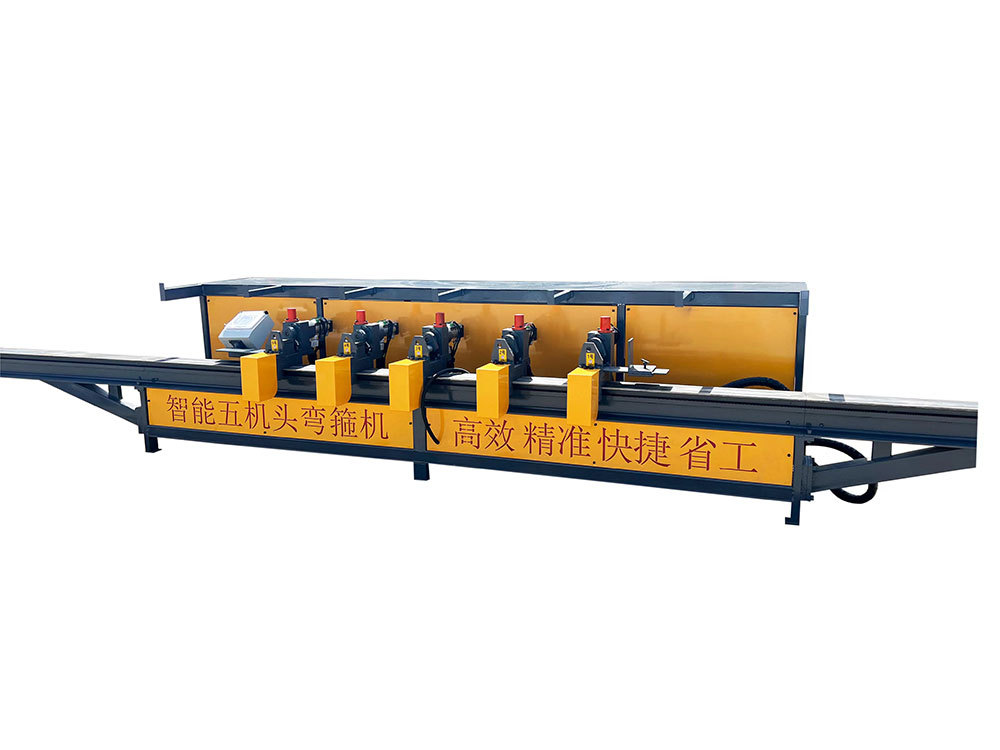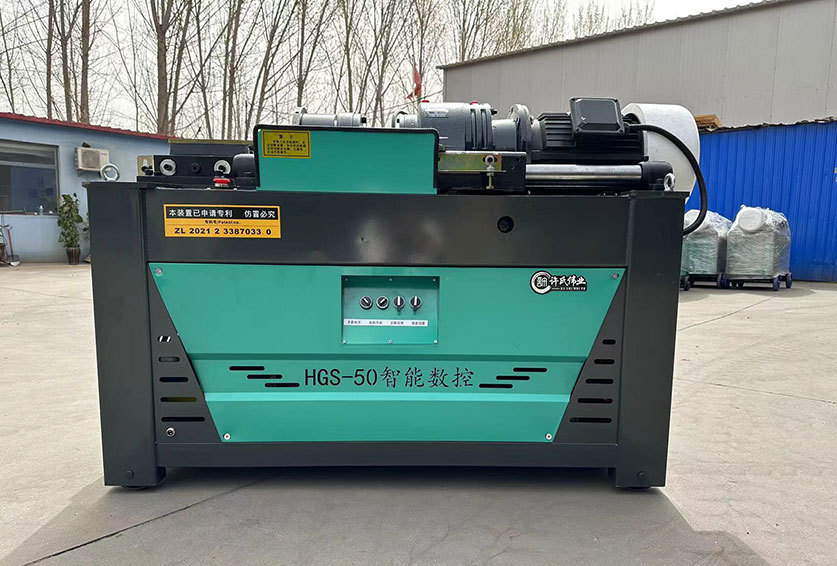Welcome to Hebei Xushi Weiye Machinery Manufacturing Co., Ltd. website!
CNC Automatic Bending: Transforming Traditional Manufacturing Methods
Release Time:
Oct 07,2025
CNC Automatic Bending: Transforming Traditional Manufacturing Methods Table of Contents What is CNC Bending? The Evolution of Manufacturing Methods Benefits of CNC Automatic Bending Key Components of CNC Bending Machines Applications of CNC Bending in Various Industries Challenges and Solutions in CNC Bending The Future of CNC Bending Frequently Asked Questions

CNC Automatic Bending: Transforming Traditional Manufacturing Methods
Table of Contents
- What is CNC Bending?
- The Evolution of Manufacturing Methods
- Benefits of CNC Automatic Bending
- Key Components of CNC Bending Machines
- Applications of CNC Bending in Various Industries
- Challenges and Solutions in CNC Bending
- The Future of CNC Bending
- Frequently Asked Questions (FAQ)
What is CNC Bending?
CNC (Computer Numerical Control) bending is a modern manufacturing process that utilizes computerized controls to precisely bend materials, typically sheet metal, into required shapes and angles. This method enhances accuracy and efficiency in production, thus replacing traditional manual bending techniques. With CNC technology, manufacturers can create complex geometries that would be nearly impossible to achieve with manual methods. The integration of CNC machines into bending processes has revolutionized the way products are fabricated, leading to increased productivity and improved quality.
The Evolution of Manufacturing Methods
The journey of manufacturing has undergone significant changes since the industrial revolution. Initially, productions were dominated by manual labor, relying heavily on the skills of craftsmen. As technology advanced, mechanization began to play a crucial role, paving the way for more efficient and faster production methods.
The introduction of numerical control systems in the late 1940s marked a key milestone. Early NC machines relied on punched tape to guide their movements. Fast forward to today, CNC technology has completely transformed the landscape. CNC machines are now equipped with advanced software that allows for intricate designs to be programmed directly, enabling manufacturers to streamline their operations and reduce human error.
Benefits of CNC Automatic Bending
The advantages of adopting CNC automatic bending technology are numerous:
1. Enhanced Precision
CNC bending allows for **incredible precision** in the bending process, ensuring that every component meets exact specifications. This is crucial in industries where tolerances must be maintained to avoid costly errors.
2. Increased Efficiency
With CNC machines, production times are significantly reduced. Automated processes enable faster turnaround, which translates to higher output without sacrificing quality.
3. Improved Safety
CNC technology minimizes the need for manual handling of heavy materials, reducing the risk of workplace injuries. Operators can control machines from a safe distance, enhancing overall workplace safety.
4. Flexibility in Design and Production
The ability to easily modify programs allows manufacturers to adapt quickly to new designs or changes in specifications. This flexibility is vital in today’s fast-paced market.
5. Reduced Material Waste
CNC bending optimizes material usage by ensuring that each bend is executed with precision, thereby minimizing wastage and lowering production costs.
Key Components of CNC Bending Machines
Understanding the key components of CNC bending machines can provide insights into their functionality and efficiency:
1. Control System
The control system is the brain of the CNC machine, interpreting design files and translating them into precise movements. Advanced control systems enhance user experience through intuitive interfaces.
2. Bending Die
The bending die is a critical component that shapes the material during the bending process. Different applications require specific die designs for optimal performance.
3. Hydraulic System
Most CNC bending machines utilize hydraulic systems for power. These systems provide the necessary force to bend materials while allowing for smooth operation.
4. Frame Structure
A robust frame ensures stability during the bending process, reducing vibrations and improving accuracy.
Applications of CNC Bending in Various Industries
CNC bending technology is employed across various industries, reflecting its versatility:
1. Aerospace Industry
In the aerospace sector, precision is paramount. CNC bending machines are used to create intricate components for aircraft, ensuring structural integrity and performance.
2. Automotive Industry
CNC bending allows for the production of complex parts such as exhaust systems, frames, and brackets, which are essential for vehicle assembly.
3. Construction Industry
Structural components like beams and supports often require precise bending, making CNC technology invaluable in construction projects.
4. Electronics Industry
CNC bending is also used to create enclosures and brackets for electronic devices, ensuring they meet exact specifications for functionality and aesthetics.
5. Furniture Manufacturing
In the furniture industry, CNC bending enables the creation of unique designs that are both functional and stylish, enhancing the aesthetic appeal of modern furniture.
Challenges and Solutions in CNC Bending
While CNC bending offers numerous benefits, it also presents certain challenges:
1. Initial Investment Costs
The upfront cost of CNC equipment can be significant. However, the long-term savings in labor and material costs often justify this investment.
2. Training and Skill Development
Operators require specialized training to effectively use CNC machines. Investing in training programs ensures that employees are well-equipped to handle advanced technology.
3. Maintenance and Downtime
Like any mechanical system, CNC machines require regular maintenance to prevent breakdowns. Implementing a proactive maintenance schedule can significantly reduce downtime.
The Future of CNC Bending
As technology continues to advance, the future of CNC bending looks promising. Emerging trends include:
1. Integration of AI and Machine Learning
The incorporation of artificial intelligence and machine learning algorithms can enhance the capabilities of CNC machines, allowing for smarter, adaptive bending processes that optimize performance in real-time.
2. Increased Automation
Further automation will streamline production lines, reducing labor costs, and improving overall efficiency.
3. Sustainable Manufacturing Practices
With a growing emphasis on sustainability, manufacturers are likely to adopt CNC bending techniques that minimize waste and utilize eco-friendly materials.
Frequently Asked Questions (FAQ)
1. What materials can be bent using CNC technology?
CNC bending can be applied to various materials, including steel, aluminum, copper, and plastics, depending on the machine’s specifications.
2. How does CNC bending improve manufacturing efficiency?
CNC bending reduces production times, minimizes human error, and allows for quick adaptations to design changes, thus streamlining the entire manufacturing process.
3. Is CNC bending suitable for small production runs?
Yes, CNC technology is ideal for both large and small production runs, offering flexibility to manufacturers regardless of their quantity needs.
4. What is the typical lead time for CNC bending projects?
Lead times can vary based on complexity and volume, but CNC machines typically offer faster turnaround compared to traditional methods.
5. How can I ensure the quality of bent components?
Implementing stringent quality control measures, such as regular calibration of machines and adherence to specifications, can guarantee high-quality outputs.
Conclusion
CNC automatic bending represents a significant leap forward in manufacturing technology, seamlessly transforming traditional methods into highly efficient, precise processes. By embracing CNC technology, industries can improve their production capabilities, reduce waste, and enhance overall safety. As CNC bending continues to evolve, its integration with advanced technologies will reshape the future of manufacturing, making it a cornerstone of modern production strategies. Investing in CNC bending not only optimizes current operations but also positions businesses for sustained growth and innovation in an ever-competitive market.
Keywords:
More information
Hebei Xushi Weiye
CONTACT US
Add: Qiaoxi street,Wuqiang county, Hengshui, China
Email: info@xswy-machinery.com
Wechat: Amanda_XUSHIWEIYE
Whatsapp: +8615933856555

Follow Us
Copyright © Hebei Xushi Weiye Machinery Manufacturing Co., Ltd.
Powered by: 300.cn Shijiazhuang SEO | Privacy Policy





